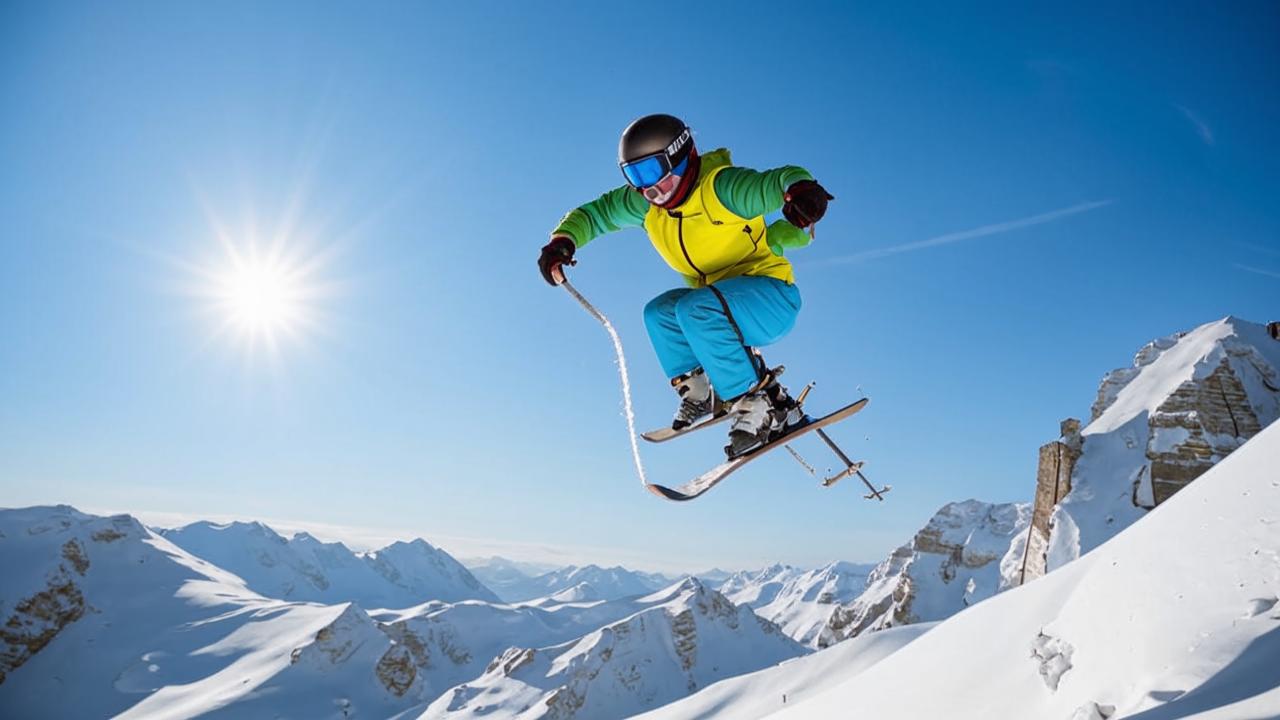Every year the number of adherents of extreme sports increases due to the promotion of healthy lifestyles and the growing popularity of sports around the world. People are attracted not only by the desire to train, but also by the risk, which gives them the opportunity to feel higher and stronger.
As we know, the more people start practicing a sport, the more stereotypes around it appear.

sports psychologist
When you fly off a cliff, you have no right to make a mistake at all.

What happens to the body during the activity?
During extreme sports, you will receive a constant charge of positive emotions. Problems will fade into the background when you rush at great speed from the slope.
Extreme is not about monotonously repetitive exercises, there you will always be waiting for new impressions, tracks, people, locations. Your accomplishments will greatly inspire and delight you. Skills, though insignificant, will allow you to feel the euphoria for which extreme athletes live.
Konstantin Bochaver
sports psychologist
Still, extreme sport is more about psychology than chemistry. Extreme athletes get a wide range of impressions, and the main thing is the pleasure of climbing or performing a difficult element. Performing a quadruple jump for a figure skater can be compared to conquering a mountain peak from the north side for a mountaineer.
What are the dangers of extreme sports?

Every sport has its “risk zones,” from muscle strains to spinal injuries. And in extreme sports, fatalities are not uncommon. The most dangerous sport of the whole extreme family is deservedly considered basejumping, in which one athlete in 30 dies.
Basejumping is an extreme sport that uses a special parachute to jump from fixed objects.
The reason is simple: the duration of flight is minimal, so the athlete simply does not have time to concentrate if there is any obstacle. But there are two options here: either to increase the number of trainings and persevere to your goal, or to give up this activity altogether.

Victoria Borzenkova
sports psychologist
If we compare with professional sports, then in pair figure skating, for example, a partner may not be able to hold the partner in support, a figure skater may fall unluckily and get serious head injuries, and this is also a risk incompatible with life, or remain paralyzed after a spinal injury due to an unfortunate fall. But, in the case of figure skating, such situations are the exception rather than the rule in the proper training of athletes, when falling there is a chance to survive, and in extreme sports this can not be, so there must be a high degree of concentration when performing tricks.
Often you can meet the opinion that extreme sports changes the mental state, increasing human tension and expressing such phenomena of the psyche as anxiety, stress, frustration, crisis, aggressive reactions, anger. But there is a contradiction in such statements, because the feeling of euphoria from achieving an incredible goal can not negatively affect the neuropsychic state of a person.

In extreme sports there is no danger or threat to the psyche. Athletes will not intentionally take risks, they will check and recheck their equipment in advance according to safety protocols. Many people consider extreme athletes to be reckless people because of their image component.
These sports, unlike most Olympic sports, became regulated much later, so there was a “spirit of freedom”. Many who did free-solo – rock climbing without insurance – or alpine skiing often looked like hippies, wore dreadlocks, had their own subculture and music, but that doesn’t make them any less responsible.

Konstantin Bochaver
sports psychologist
Sports in general are not the most dangerous thing. Extreme sports is a great activity, only more demanding on physical and psychological preparation.
Extremals – infantile self-deceivers or not?
Often doctors dislike extreme athletes, because they deliberately go to an activity that can cause great harm to their health. Medics believe that extreme athletes are like children who can not resist the desire for the good of life and thoughtlessly go to accomplish a dangerous but exciting action, rejecting all prejudices and creating their own world.

Konstantin Bochaver
sports psychologist
One of the reasons for this opinion is the external appearance of extreme athletes. Athletes often walk around with piercings, tattoos, long beards, bright, dressy and noisy, so in some people it may cause associations with something childish. But athletes soberly evaluate their actions, because otherwise nothing will work.
A serious extreme project requires careful preparation and the work of a whole team. Most representatives of extreme sports are mature and often family people, not asocial loners, so they understand the degree of responsibility for their lives.

Extreme athletes are overly emotional, and there is a connection to children in this too. They are direct and strong in spirit, experiencing a wide range of sincere emotions and experiences akin to children. It is possible to compare them with children, but only in a positive way. These people really evaluate their possibilities and take a conscious risk.
Is there an addiction to extreme sports?
Psychologists suggest that there is a certain extreme gene, with which the craving for risky deeds that expand the boundaries of life and make you overcome fear is transmitted. A person with a constant need for thrill seeking must have a biogenetic addiction to difficult life circumstances. Is there some reason why some people cannot live without the extreme and others bypass it?

Konstantin Bochaver
sports psychologist
There is no specific gene. There is no unique combination of proteins and amino acids that make one person more extreme than another. The passion for such sports is connected, on the one hand, with culture and upbringing, and on the other hand, with physical capabilities.
For example, let’s take representatives of the Caucasian republics, among whom it is absolutely unfashionable to engage in mountaineering. They are born in the mountains and are absolutely predisposed to this sport. Due to their powerful lungs they can walk tirelessly on the mountains, but they choose martial arts or soccer. And in their case, the cultural factor wins out. Sports genetics is an interesting and complex matter, but there is no single “adventurer” gene yet.

Humans are willing to do incredible things because of their motivation. Getting pleasure is one of the components of intrinsic motivation, when you feel that you personally have done something impossible. And sponsors, awards, earnings – these are components of external motivation, because extreme sports are highly paid and spectacular. Social approval and admiration for his tricks also plays a big role.
If the athlete succeeds in producing a wow effect on the spectator, the ego also gets pleasure.A person also enjoys polar states, when fear is followed by euphoria from achieving the goal.
Has extreme sports become more popular?
A large number of people escape from gray everyday life by engaging in extreme sports. There are enough people of all ages and professions who want to get a thrill.

However, in extreme sports come much later than 16-20 years old, as the scientist-psychologist Frank Fairley argued, because the peak of endurance comes in middle age. Therefore, many mountaineers are older people, with some life experience and very intellectual. They come to the extreme from engineering, science and exact professions, even getting a second education.

Konstantin Bochaver
sports psychologist
The mass desire to do something beautiful away from people is a natural desire. But now it has become more accessible, because before, in order to buy equipment, you had to order it from acquaintances at the factory, but not everyone had such an opportunity.
On the other hand, many sports have entered the family of extreme sports, but they are in fact not. A classic example is sport climbing. There it is quite difficult to get any injuries, and no one has been climbing on rocks for a long time, because there are specially prepared stands, but we remember that climbing on rocks is extreme.
Also extreme sports have expanded and become more democratic. Many sports have become Olympic, and such sports have clear regulations that make them less life-threatening.






